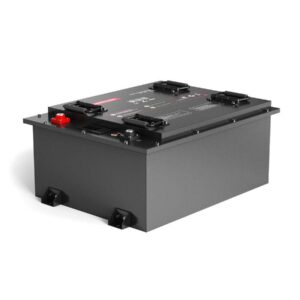
What shortens car battery life?
Car battery life shortens due to heat degradation, parasitic drains, and sulfation from partial charging. Temperatures above 30°C accelerate chemical reactions, doubling discharge rates, while frequent short trips prevent full recharging. Vibration loosens internal connections, and outdated charging systems cause over/under-voltage stress. Regular maintenance, voltage checks (12.4V minimum), and monthly full recharges extend lifespan beyond 3–5 years.
Which Golf Cart Batteries Are Better: Costco or Sam’s Club?
How does heat accelerate battery degradation?
High temperatures (>30°C) increase electrolyte evaporation and grid corrosion. For every 8°C above 21°C, battery lifespan halves. Prolonged heat causes plate sulfation, reducing capacity by 30% annually in hot climates

Heat accelerates chemical reactions within lead-acid batteries, breaking down water into hydrogen/oxygen and depleting electrolyte levels. This exposes lead plates to air, causing irreversible sulfation. A 2022 SAE study found Arizona batteries fail 19 months faster than Alaska’s. Pro Tip: Park in shade and use thermal wraps in engine compartments. Imagine baking soda losing fizz—similar to electrolyte losing reactivity.
Why do short trips drain batteries faster?
Incomplete recharging during brief drives leaves batteries at 20–80% state of charge (SoC), triggering sulfation. Starting a car draws 100–300A, requiring 10+ minutes driving to replenish.
Car alternators need 1,500–2,000 RPM to deliver 14.2V charging voltage. City driving at idle (600–800 RPM) provides only 8–12A—insufficient to recover the 2–5Ah consumed per engine start. Over weeks, this creates a cumulative deficit. For example: A daily 5-minute commute drains 0.5Ah net daily, causing 15Ah monthly loss. Solution: Use a 10A smart charger weekly. Like refilling a leaky bucket, short trips add less than they take.
| Scenario | Charging Current | Net Gain/Loss |
|---|---|---|
| 10-min drive | +8A | -1.2Ah |
| 30-min highway | +45A | +22.5Ah |
What parasitic drains kill batteries?
Common phantom loads include infotainment systems (30mA), alarms (25mA), and faulty relays (500+ mA). A 50mA drain empties a 60Ah battery in 50 days.
Modern cars have 15–30 always-on circuits for keyless entry, clocks, and ECUs. Acceptable drain is <50mA (0.05A), but aftermarket accessories often push it to 100–300mA. Use a multimeter on the negative terminal: >0.1A indicates trouble. Real-world case: A 2021 Ford F-150’s trailer module drew 1.2A continuously, killing batteries in 4 days.
Does overcharging damage car batteries?
Yes—voltage >14.8V causes electrolyte boiling and plate corrosion. Faulty regulators or aftermarket chargers often cause this, reducing lifespan by 40%.
Alternators should maintain 13.8–14.4V. Beyond 14.8V, excessive gassing occurs, warping plates and cracking cases. AGM batteries tolerate up to 14.7V; flooded types fail above 14.4V. Pro Tip: Test charging voltage monthly—a 15V reading demands immediate regulator replacement. Think of overcharging like overinflating a tire: structural damage is inevitable.
| Battery Type | Max Charging Voltage | Overcharge Risk |
|---|---|---|
| Flooded | 14.4V | High |
| AGM | 14.7V | Moderate |
How does vibration impact battery health?
Mechanical stress fractures internal welds and dislodges active material. Off-road vehicles experience 3x higher vibration failure rates versus sedans.
Vibration testing (per SAE J537) requires batteries to withstand 30G shocks. However, potholes and rough terrain generate localized 50–100G impacts. Loose hold-downs exacerbate movement, causing terminal fractures. Gel and AGM batteries resist vibration 60% better than flooded types. Example: ATV batteries last 18 months average versus 4 years in passenger cars.
What Is the Best Battery for a Diesel Pickup Truck?
Battery Expert Insight
FAQs
Does using car electronics while parked drain the battery?
Yes—30 minutes of radio/AC use can draw 10–20Ah, requiring 1+ hour driving to recharge. Use a portable power pack for accessories.
Can jump-starting frequently harm batteries?
Repeated jumps induce plate warping from high-current surges. Limit jumps to 3x annually; replace batteries showing <12V after charging.
